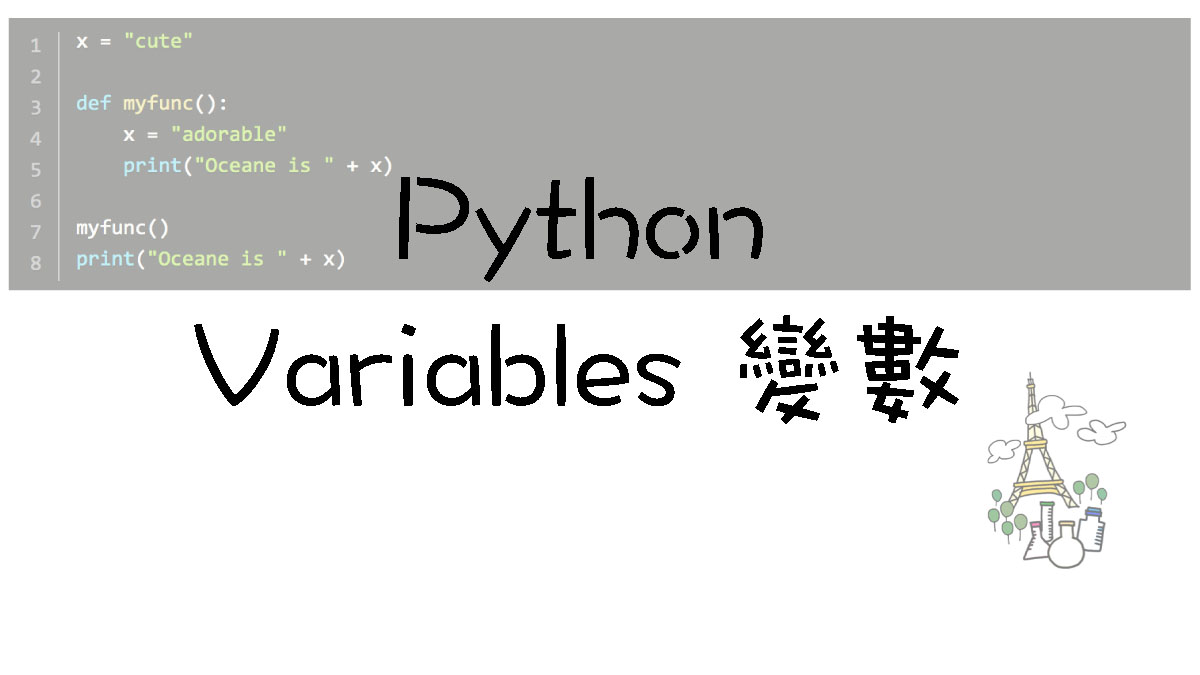[Python初學者] Variables 變數
變數的名稱:
- 開頭必須是字母或底線
- 開頭不能是數字
- 名稱只能包含字母(A-z),數字(0-9)和底線(_)
- 字母大小寫代表的變數不同(例如oceane,Oceane和OCEANE代表的變數皆不同)
多樣變數呈現:
x, y, z = "notre", "petite", "Oceane"
print(x)
print(y)
print(z)結果會出現:
notre
petite
Oceane如何使用加號 +
a) 當「字串」(需加上雙引號 ” “)用加號結合,則會將字串接在一起
x = "Oceane is "
y = "cute"
print (x + y)得到的結果為:
Oceane is cuteb) 當「數字」用加號結合,則
x = 100
y = 88
print (x + y)得到的結果為
188全域變數(Global variable)和區域變數(Local variable)
以下例子,第一個出現的 x (#變數1,x = “cute”) 是全域變數,在整個程式語言中通用。而第二個出現的 x (#變數2,x = ” adorable”) 是區域變數,只有在def myfun(): 此區域內會出現。
Note: 井字號#後的文字為註記,不會影響程式語言(如前文)
x = "cute"
def myfunc():
x = "adorable"
print("Oceane is " + x)
myfunc()
print("Oceane is " + x) 因此結果是:
第一個在def myfunc(): 中,print在區域變數中定義的#變數2,結果為Oceane is adorable。
而第二個print在全域變數中定義的#變數1,結果為Oceane is cute。
Oceane is adorable
Oceane is cute但是,假如在def myfucn():中的變數(#變數2,x = ” adorable”)註記為x = global,則#變數2將取代#變數1 (#變數1,x = “cute”),成為全域變數。
x = "cute"
def myfunc():
global x
x = "adorable"
print("Oceane is " + x)
myfunc()
print("Oceane is " + x)結果1和結果2皆為:
Oceane is adorable
Oceane is adorable